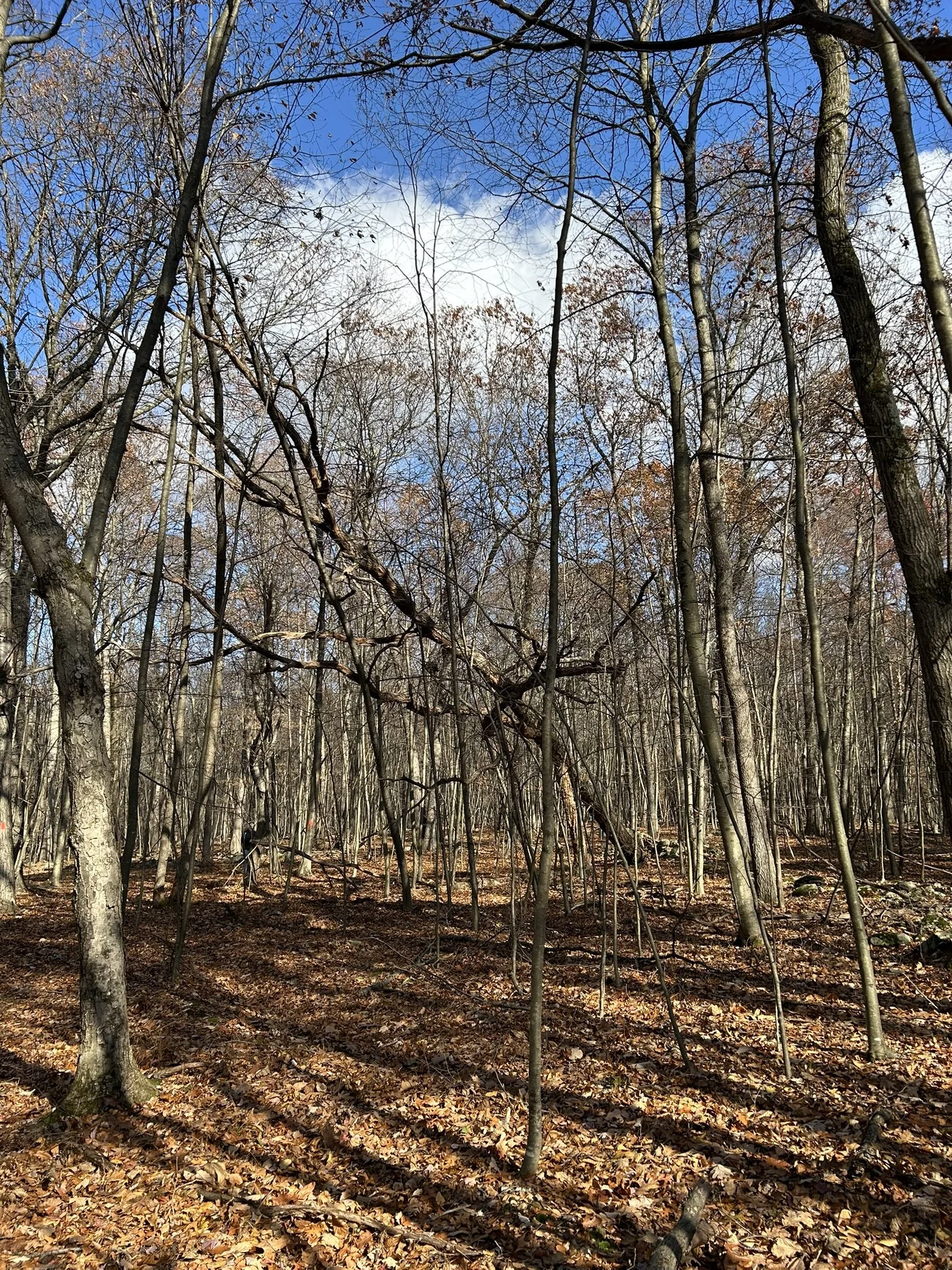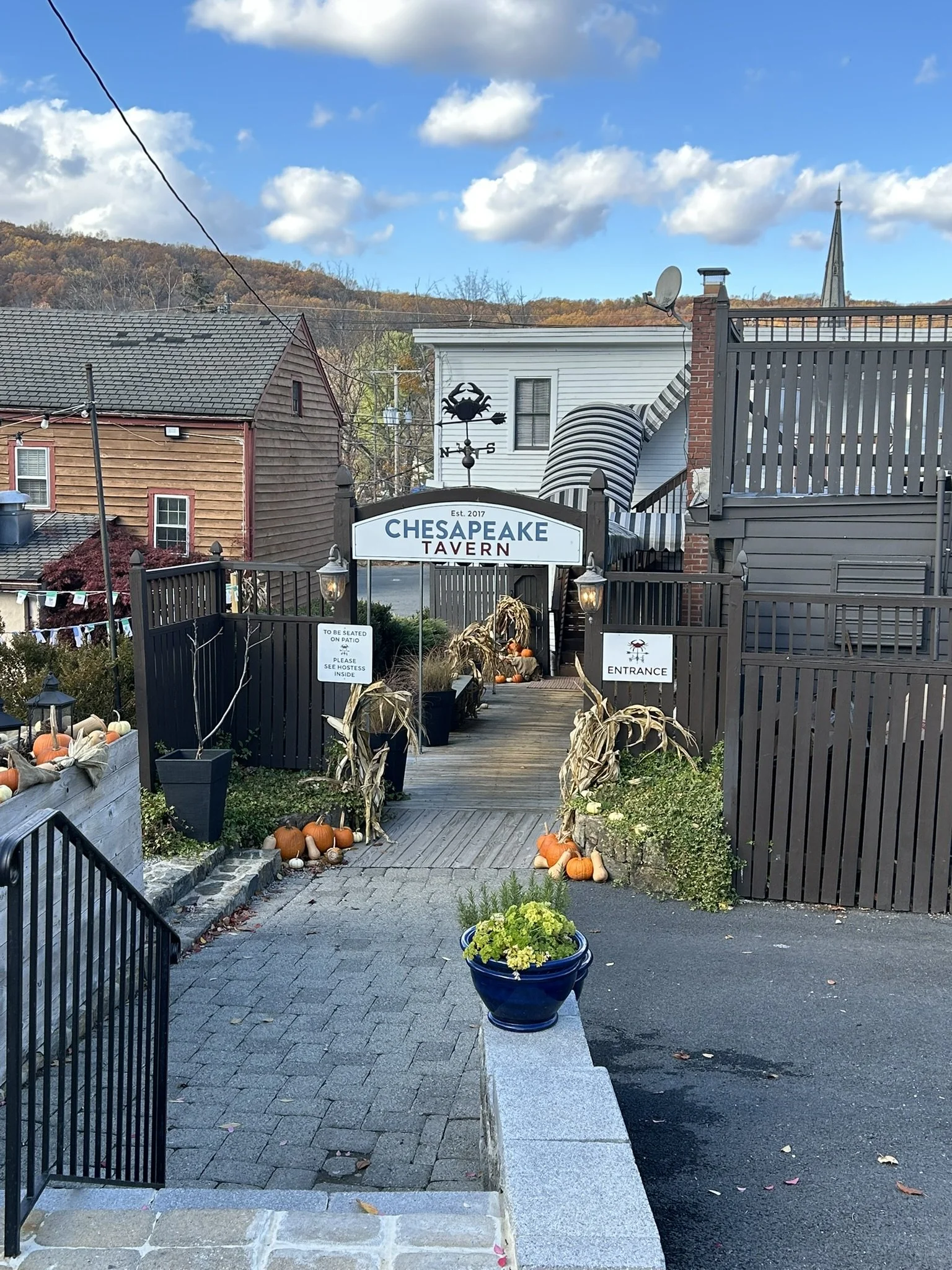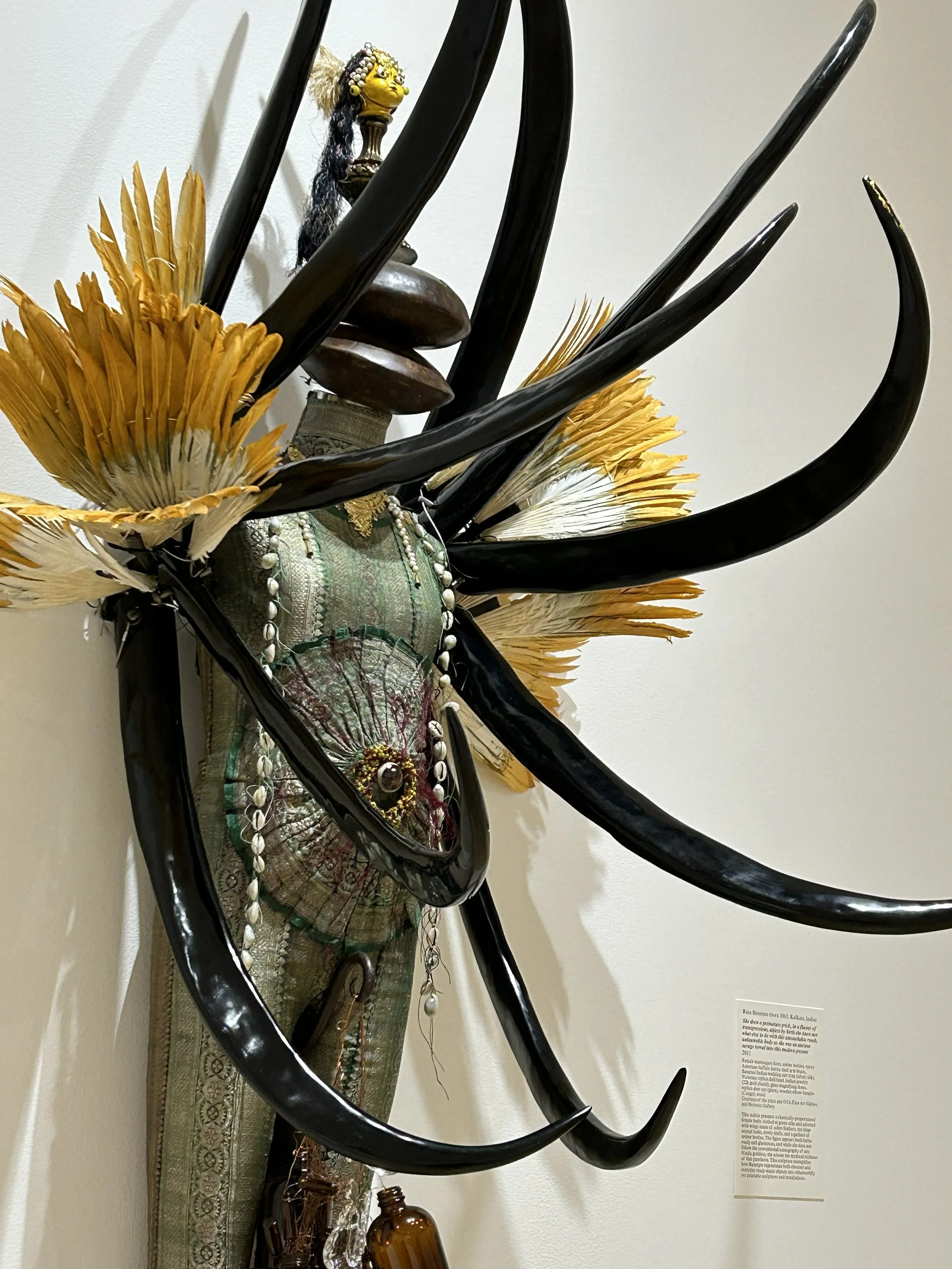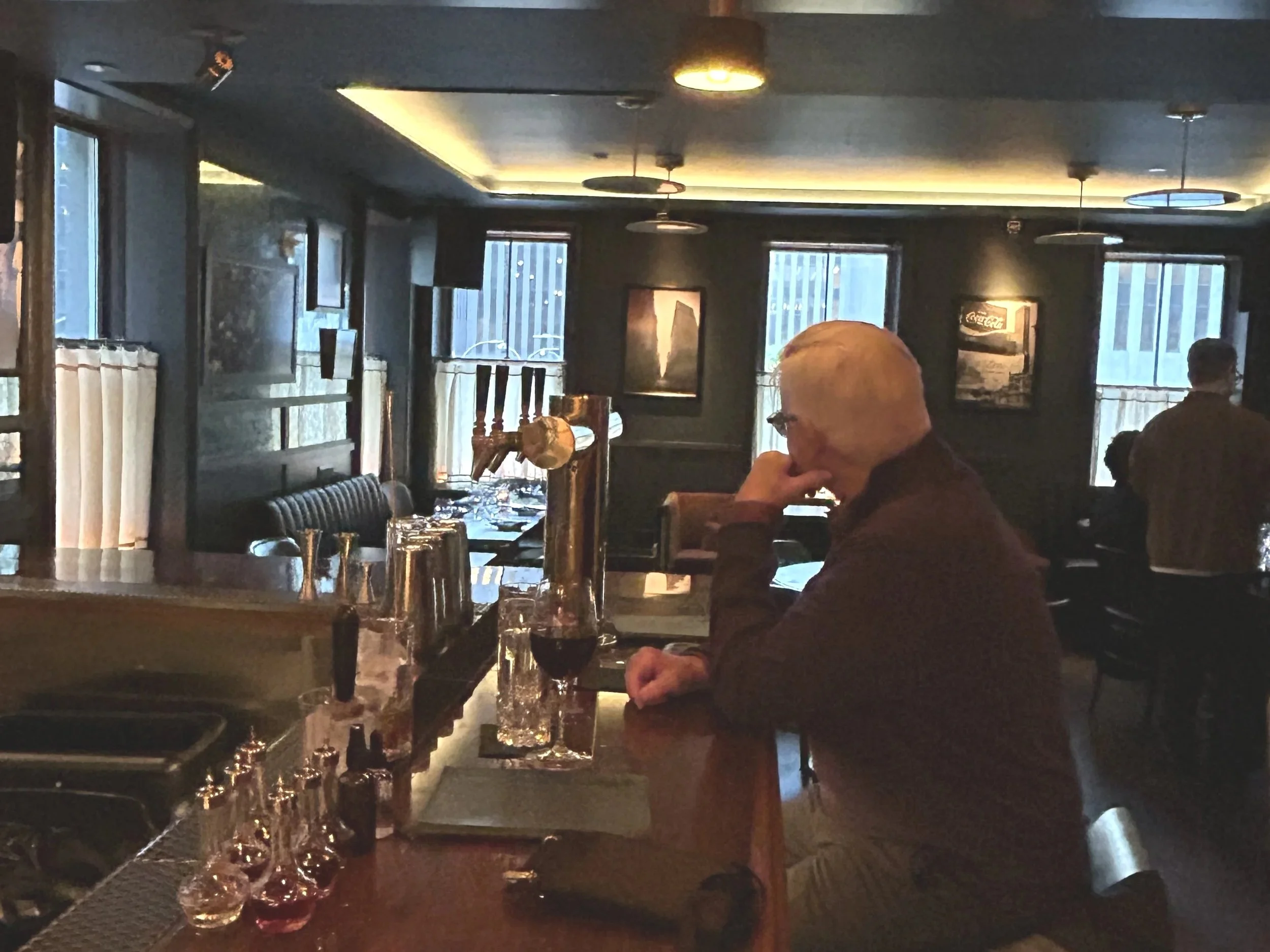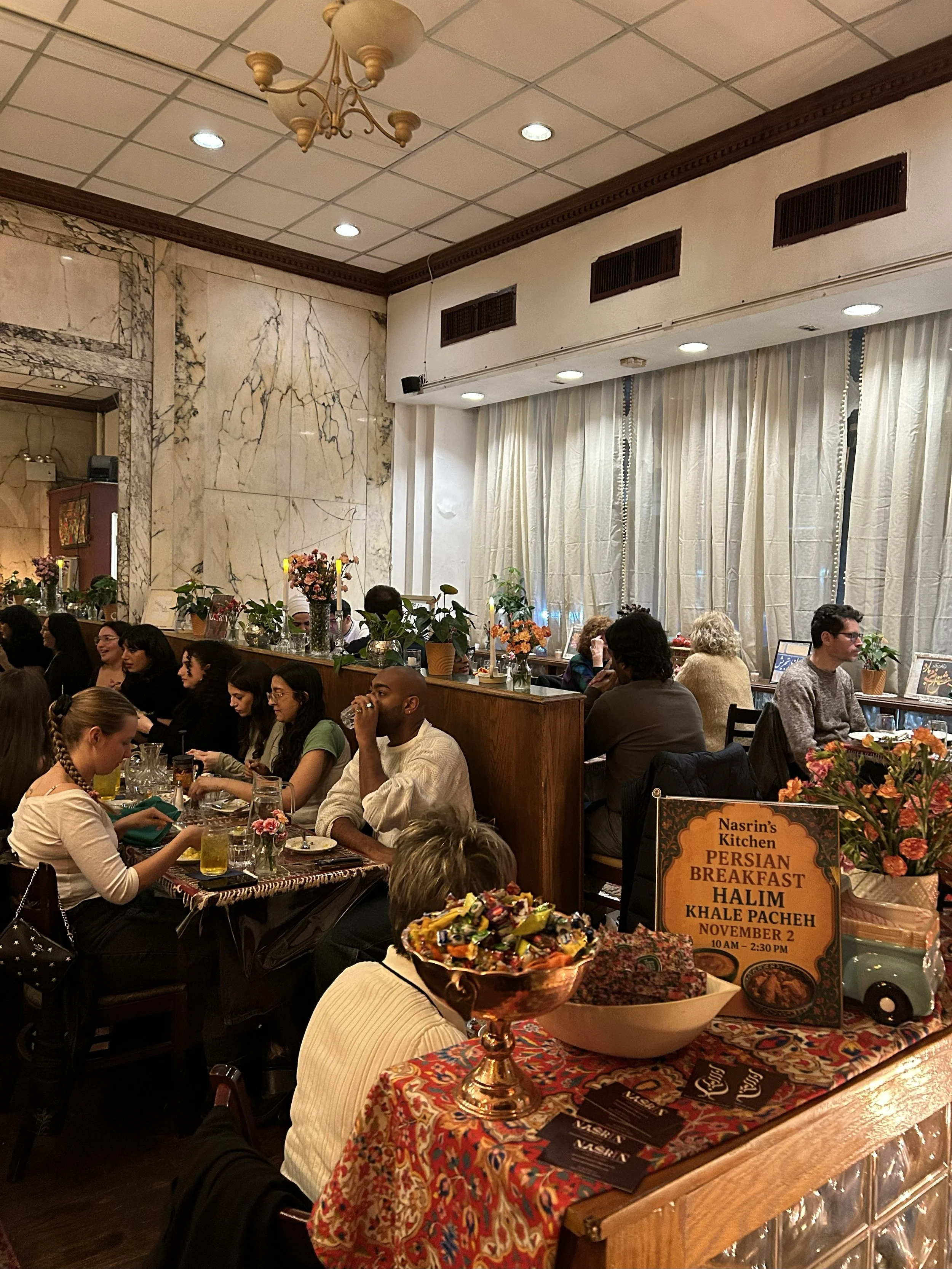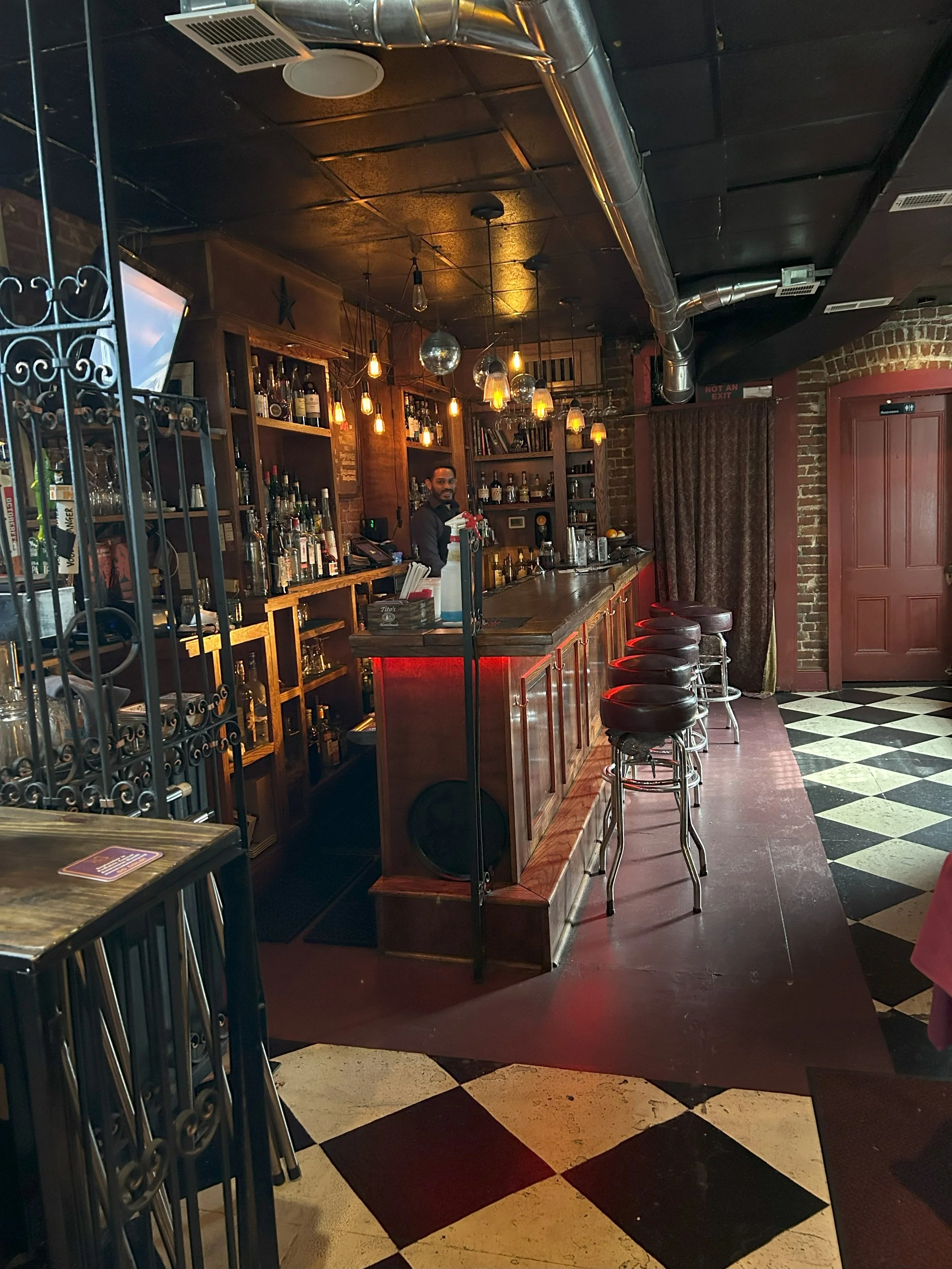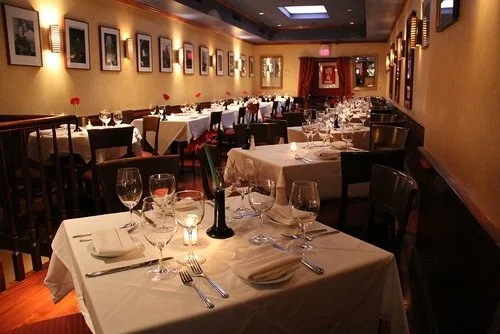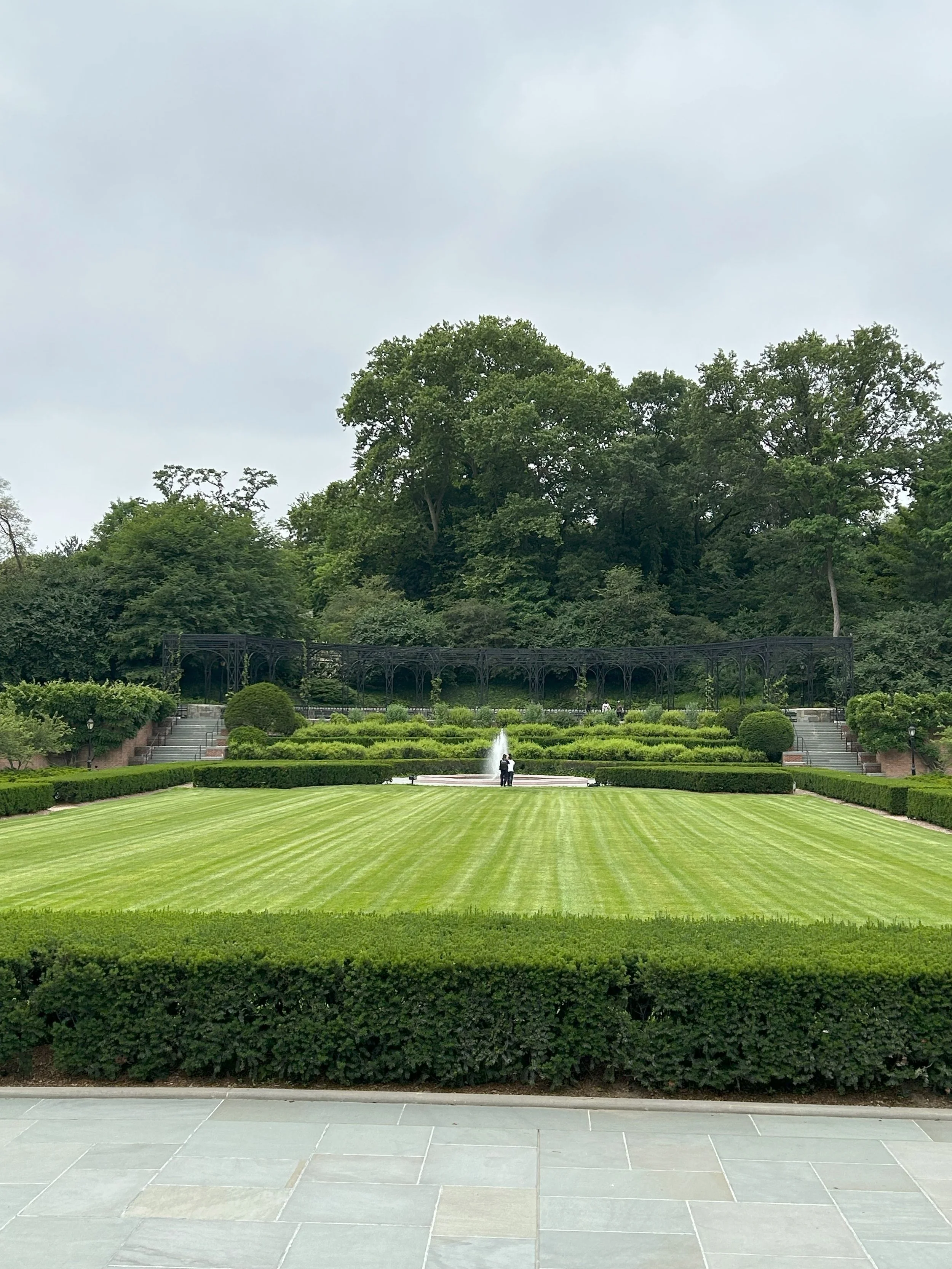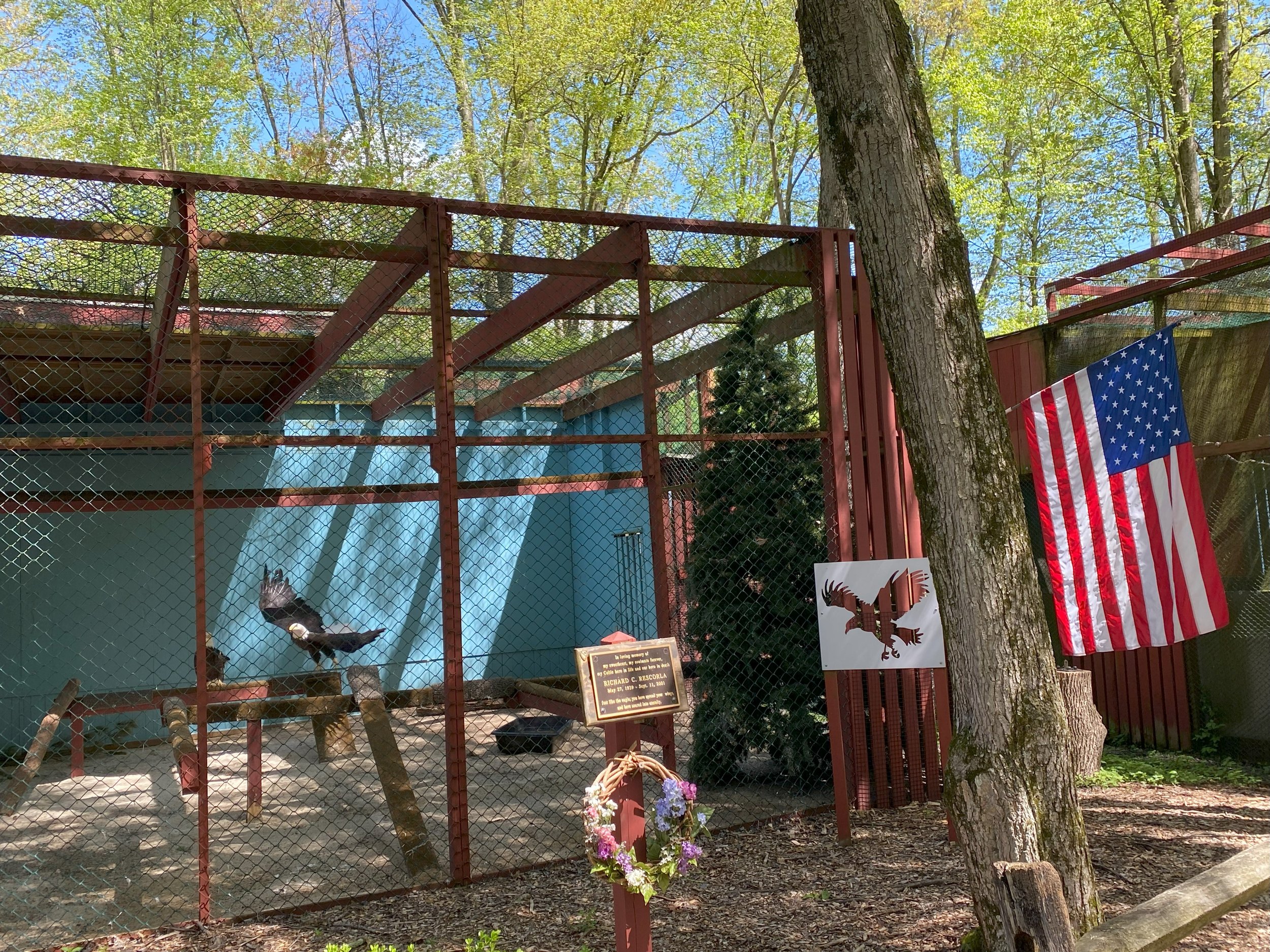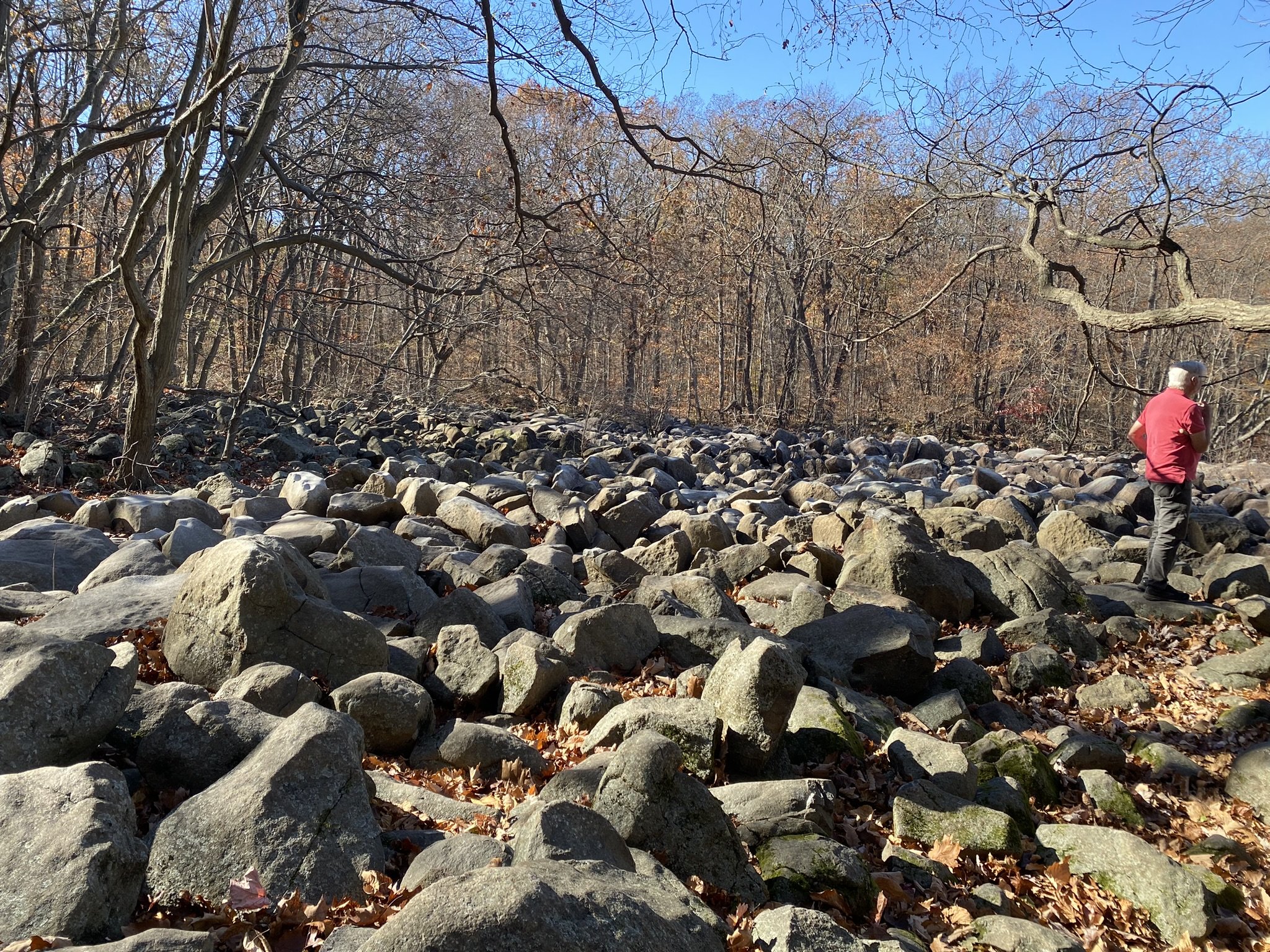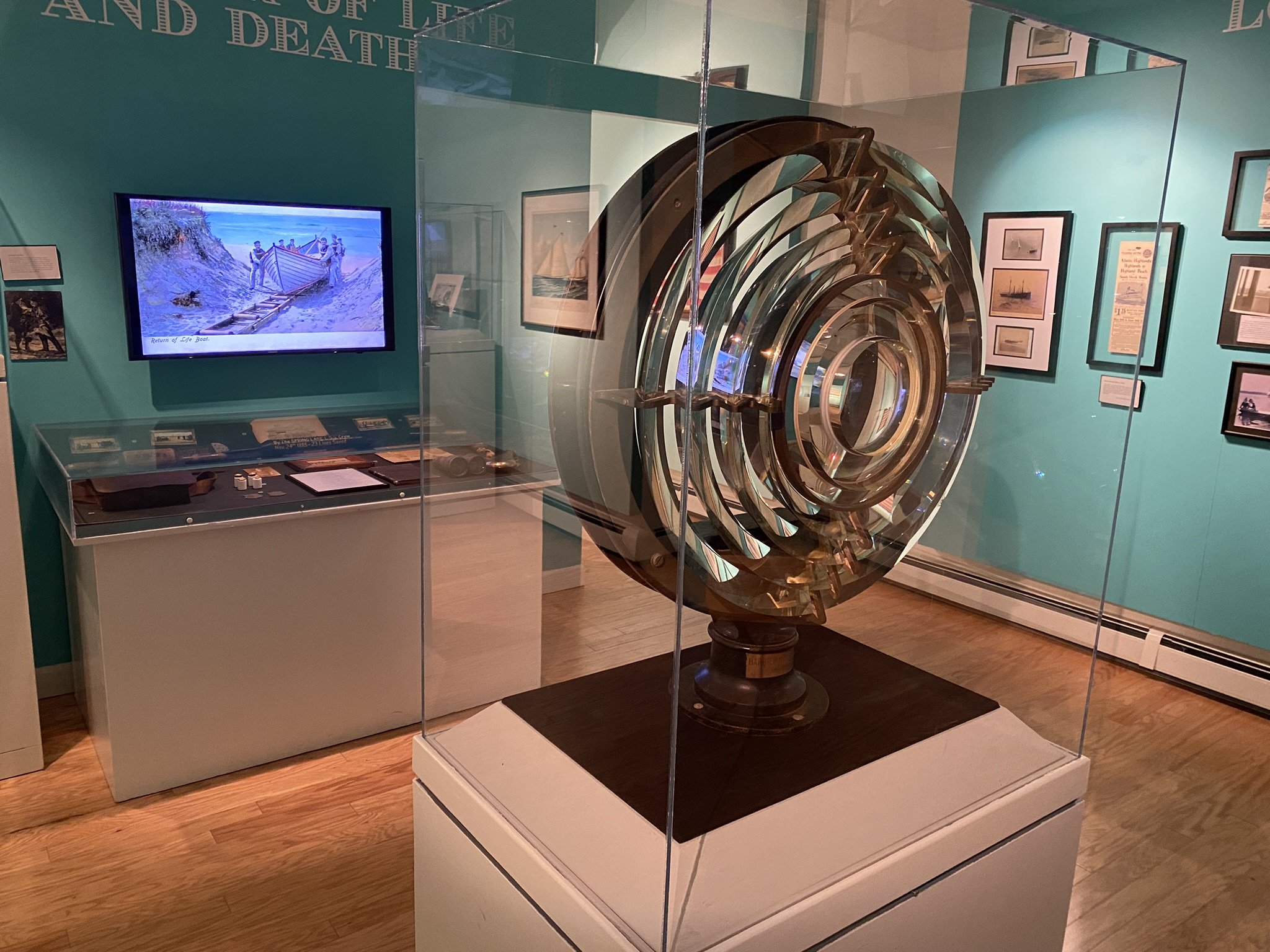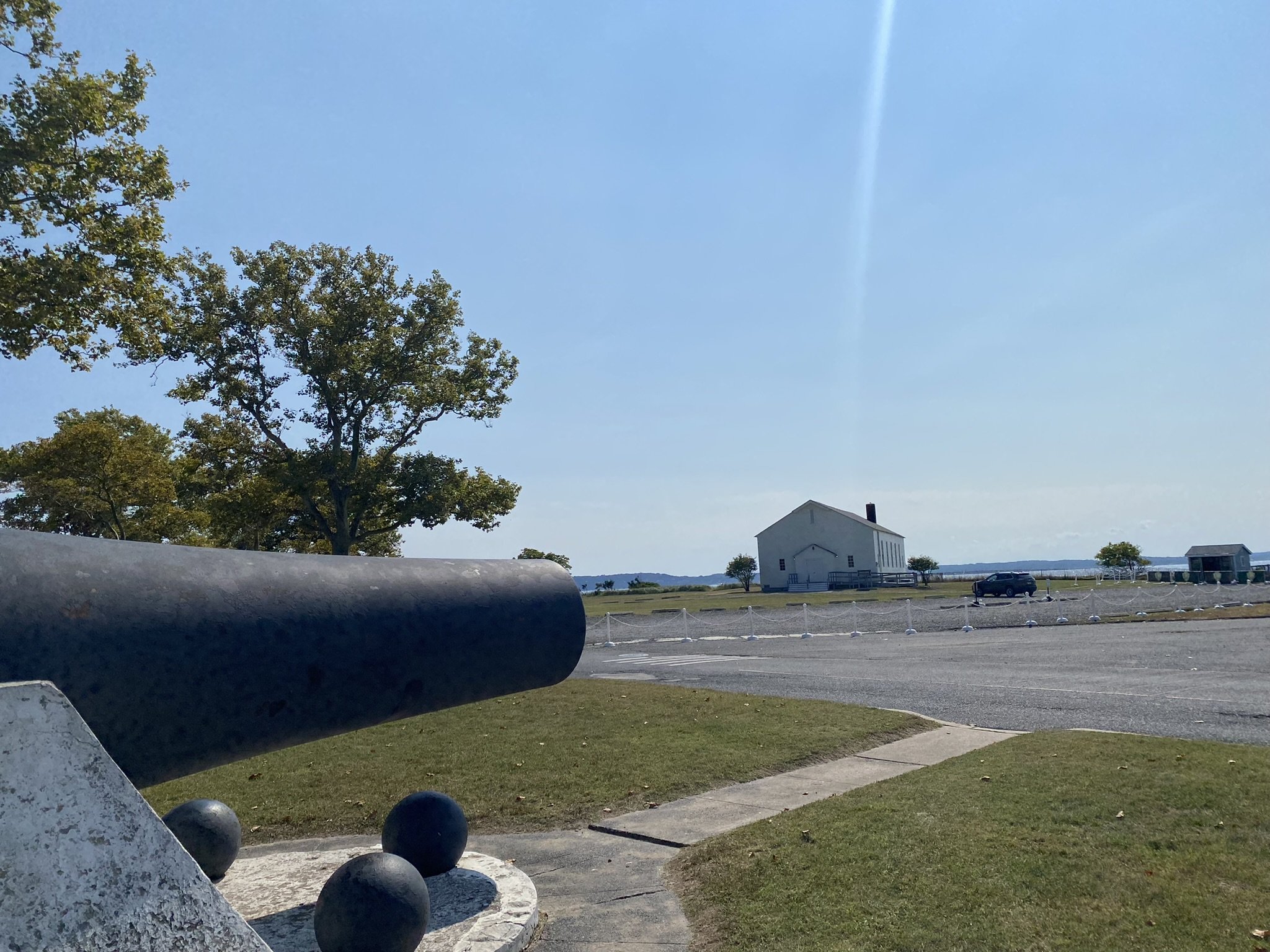Maureen Ogden Preserve
New Jersey needs breathing room because it’s the most densely populated state in the U.S. Fortunately, a patchwork of land preserves provides lots of it.
Today, we land on the Maureen Ogden Preserve near Long Valley, a 228-acre wooded property atop Schooley’s Mountain ridge. We choose the red trail for our walk because it stays almost entirely in the woods versus the longer blue trail that involves walking along the road for a stretch. At less than a mile, the red trail provides a leisurely, woodsy loop with plenty of fresh air on a crisp autumn day.
Chesapeake Tavern
After our walk, lunch beckons less than 10 minutes away at Chesapeake Tavern, a favorite seafood restaurant in these parts. (The Long Valley Pub & Brewery sits adjacent for those seeking an alternative.) Long Valley has several historic structures dating from the Revolutionary War, and this restaurant resides in one of them, a charming wooden building with outdoor seating during warmer weather. We dine inside on fish sandwiches and crab cakes before continuing our day.
Morris Museum
Our last stop is the Morris Museum in Morristown, a thirty-five minute drive but on our way home. Built around the Frelinghuysen mansion, originally designed by Stanford White, the museum offers an array of exhibits, along with live performances at its Bickford Theater. Our destination today is the unique Mechanical Music and Automata exhibit. Here, several rooms display 750 music boxes, player pianos, and mechanical dolls that operate through mechanisms other than electricity, such as wind-up springs or complex pneumatic systems. The orchestrion, for example, can play an entire orchestra of instruments.
Walter Rossi, The Buddha, mixed media


